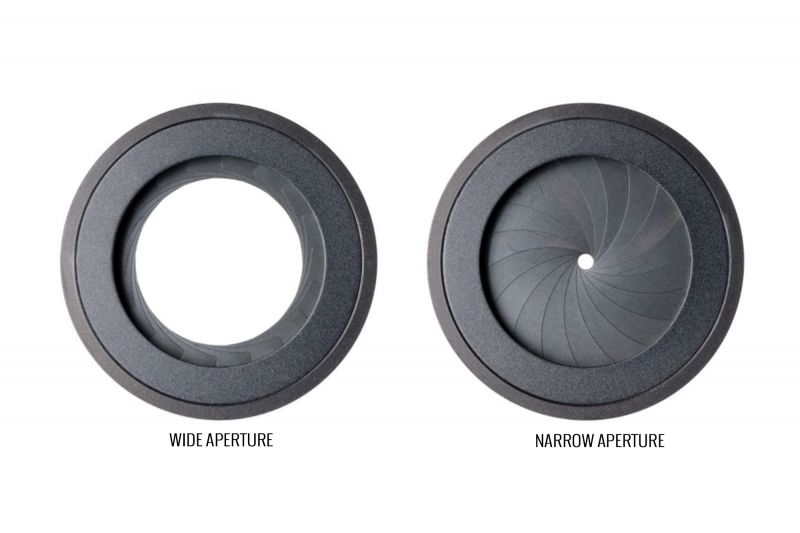-
Term:
Description:Term: Color Temperature
Description: Color temperature is a numerical system for measuring color on a warm-to-cool spectrum. It is measured in degrees Kelvin (K) with higher numbers corresponding to bluer, or "cooler" tones and lower numbers corresponding to yellower, "warmer" tones. It may seem counterintuitive that color temperatures that are higher degrees Kelvin are considered cooler, but it helps to think of a flame - blue flames are actually burning at a higher temperature than yellow flames.

Technical explanation of Color Temperature
Why does color temperature go from “warm” to “cool”, and yet the actual temperature numbers go from low to high? This confusing quirk is not just present among photographers, but everywhere that the color of light is referenced. “Cool” is often used to describe the bluer colors simply because the human mind relates it to cold things, such as ice or snow. Oppositely, “warm” colored light often reminds us of warm things like a campfire or any type of flame.
If this is confusing, think of it this way: A blue flame is the hottest! In reality the difference in temperature between a blue and red flame is not actually very much, but it is nonetheless a good way to remember why “cool blue” and “red hot” actually correspond with Kelvin numbers that actually go in the opposite direction.

Why does lowering my Kelvin make the image turn blue, and raising the Kelvin turns an image red?
In a digital camera, your white balance is the setting that tells the camera which Kelvin temperature should appear white. If you are indoors and the ambient light is actually 3200 K, and you set your white balance to 3200 K, then a picture of a neutral grey subject will in fact appear neutral grey. Alternately if you go outdoors into sunlight that is approximately 5500 K, and set your white balance accordingly, the grey subject image will again appear neutral grey.

If, however, you are outdoors, and you set your Kelvin white balance to 3000 K, you’ll be telling your camera to use a “white point” that is far lower than it should be, and this will result in any light that is a much higher Kelvin temperature appearing just that way: much more blue. And vice versa- if you are outdoors and set your white balance to 5000 K but then go indoors, Having your WB set to a really high Kelvin number, in the presence of a really low Kelvin temperature light, will result in a very warm colored image.
Related Articles to Color Temperature Definition
4 Ways to Incorporate More Color Into Your Photography
Shivani Reddy, 1 year ago 11 min readWant to learn how to capture vibrant colors in photography? Here are 4 ways!
Our 3 Favorite Gels for Ambient Light Manipulation
Pye Jirsa, 4 years ago 7 min readGels are a super fun tool that can be used to color correct scenes or to creatively alter the image.
5 Common Mistakes in Editing Landscape Photography
David J. Crewe, 4 years ago 9 min readIn this post, I’m going to talk about a few common editing mistakes in Luminar 4, using my own images as examples
2 Ways To Light Details for Wedding Reception Photography
Pye Jirsa, 4 years ago 4 min readIn this video, we’ll show you two easy ways to light details for wedding reception ballrooms.
Lightroom Color Adjustment for Environmental Portraits
Shivani Reddy, 8 years ago 4 min readFind out how a tint shift can dramatically alter your environmental portraits.
The 5 Rules of Color Correction in Lightroom
Pye Jirsa, 11 years ago 7 min readIn this article, we will go over the 5 “rules” of color correction. These rules include color calibrating your monitor, using a high quality wide gamete display, working in a semi-dark area, making largest adjustments first, and remembering that color correction is somewhat subjective. Following these 5 rules will help you get the best quality out of your images.
Latest Reviews
Featured Articles
-
Term:
Description:Term: Color Temperature
Description: Color temperature is a numerical system for measuring color on a warm-to-cool spectrum. It is measured in degrees Kelvin (K) with higher numbers corresponding to bluer, or "cooler" tones and lower numbers corresponding to yellower, "warmer" tones. It may seem counterintuitive that color temperatures that are higher degrees Kelvin are considered cooler, but it helps to think of a flame - blue flames are actually burning at a higher temperature than yellow flames.
Color Temperature
kə́lər tɛ́mprəčər




Get Connected!